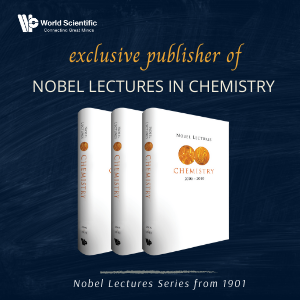System Upgrade on Tue, May 28th, 2024 at 2am (EDT)
Existing users will be able to log into the site and access content. However, E-commerce and registration of new users may not be available for up to 12 hours.For online purchase, please visit us again. Contact us at customercare@wspc.com for any enquiries.
The observation of Nature is an inexhaustible source of inspiration to promote innovations in chemistry. The bioinspired approach is a revolution in our paradigms because it is not based on what we can take to nature, but on what we can learn from it. Enzymatic systems involved in solar energy conversion (photosystem), hydrogen production (hydrogenases), dioxygen activation (oxydases et oxygenases), CO₂ reduction (CO dehydrogenase) use abundant and cheap starting material such as O₂, H₂O and CO₂. Inspiration of these biological systems is a solution to make our chemical processes greener. These are some of the many challenges that bioinspired chemistry is able to take up.
A number of the recent developments in bioinspired chemistry are discussed, including some descriptions on the biological systems that are the source of inspiration. This book is a guide to where bioinspired chemistry will be in the near future and provides a thoughtful perspective on how bioinspiration could change our world.
Sample Chapter(s)Preface
Chapter 1 :
Contents:
- In vitro and In vivo Synthesis of Bacteriochlorophyll Absorbing Near-Infrared Light (Yusuke Tsukatani and Hitoshi Tamiaki)
- Porphyrins in Molecular Solar Cells (Lydia Cabau, John N Clifford and Emilio Palomares)
- Semi-Synthetic Responsive Matrices for Artificial Photosynthesis (R Purchase, R Cogdell, F Breitling, V Stadler, N van Hulst, G-J Kramer, A Ramirez, R Zwijnenberg, A Kallergi, J B de Baan, I Rudra and H J M de Groot)
- Artificial Hemoprotein Assemblies in Development of Nanobiomaterials (Koji Oohora and Takashi Hayashi)
- Hydrogenases: From Biomimetic to Bioinspired Models (Dumitru Sirbu, Tatiana Straistari and Andrew C Benniston)
- Bioinspired Models of Mo and W-Enzymes in CO₂ Reduction (Jagannath Bhuyan and Sabyasachi Sarkar)
- Tyrosinases: Enzymes, Models and Related Applications (Aleksandar Bijelic, Annette Rompel and Catherine Belle)
- Modeling the Mononuclear Copper Monooxygenase Active Site (Alda Lisa Concia, Alessia Munzone, Maria-Chrysanthi Kafentzi, Amélie Kochem, Marius Réglier, Christophe Decroos and A Jalila Simaan)
Readership: Post graduate students and researchers in photochemistry, biological chemistry and organic chemistry.





















